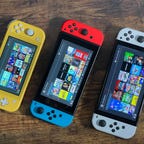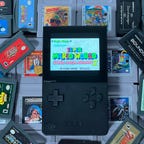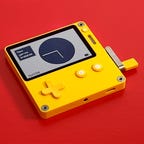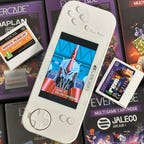Over the last few years, we’ve witnessed the revival of handheld game consoles — thanks to the convenience of on-the-go gaming and streaming technology. Additionally, there’s no doubt that the 2017 success of the Nintendo Switch also contributed to the shift. These days, there are even more options: Steam Deck, indie and retro consoles like the Panic Playdate, Analogue Pocket and Evercade EXP, and mobile streaming devices like the Razer Edge and Logitech G Cloud. Here are the best dedicated handheld game console options and why they’re worth considering.
Phones and tablets already do a fine job of playing tons of great games and streaming games from consoles or the cloud. Dedicated devices can provide unique features, exclusive games or extra power to do things your phone can’t. It almost feels like a return to the mid-2010s era of the Nintendo 3DS and PlayStation Vita.
The Nintendo Switch has been the best and most affordable portable game system for years and continues to be CNET’s clear top pick. At $300 (or $350 for our favorite model), it can play a huge variety of Nintendo games and indie games, it can dock with a TV and can even play some fitness games. But Valve’s Steam Deck offers a unique proposition for those with deeper pockets: It’s large, and it can double as a full gaming PC. A year later, it’s still great (and arguably even better than before).
For those who miss retro game handhelds like the Game Boy, you might consider putting yourself on the waiting list to order the Analogue Pocket or Panic Playdate too, but both of those systems are more niche — and more indie- or retro-targeted — than the Switch and Steam Deck.
We’ll explain below.
Editors’ choice
Show less
The Nintendo Switch is over five years old now, but Nintendo has indicated that no true successor is coming right now. A Pro model has been rumored for a while, but in the meantime the existing Switch remains extremely capable, full of great games (including lots of indie offerings), and pretty affordable considering its handheld/TV-connected dual function. The Switch has also become a fantastic source of retro games (Game Boy, NES, SNES, Genesis, N64 and more) via the subscription-based Switch Online service.
The OLED-screened Switch, which was released in October 2021, is the best Switch and our recommended pick. The more vivid and larger display looks fantastic, its rear kickstand works better for tabletop gaming, and both of these upgrades are worth the extra $50. The original Switch (or the V2 version), at $300, works similarly and is also still fine, and occasionally comes in special editions and holiday game bundles. The smaller, handheld-only Switch Lite is a great value pick at $200 for anyone who just wants a basic portable game system, but it lacks any ability to connect to a TV, and its controllers don’t detach. This makes it less versatile for families, and means you can’t replace the controllers if they break.
Photo Gallery 1/1
Switch Lite (left), Switch (middle), OLED Switch (right): the three Nintendo Switches available now.
Scott Stein/CNET
Show expert take Show less
Show less
Valve’s big and powerful Steam Deck is a marvel. It can play a wide variety of PC games surprisingly well, and is the dream portable for any hardcore Steam fan, or anyone who has a big library of PC games. The Steam Deck can get expensive for the larger storage tiers, but for what it’s capable of, it’s not a bad deal. The ability to play PC games or stream cloud-based games, and to connect to a monitor, keyboard or other accessories, puts the Steam Deck in a class of its own. A year later, it’s still fantastic and worth getting right now (we don’t know when a second-gen Steam Deck will be announced, though).
Photo Gallery 1/1
Dan Ackerman/CNET
Show expert take Show less
Show less
The Pocket looks like a totally remade Game Boy, and it is, in a sense. Analogue’s gorgeous handheld can play original Game Boy, Game Boy Color and Game Boy Advance cartridges perfectly, and can even play Sega Game Gear games using an adapter (Atari Lynx, Neo Geo Pocket and Turbografx-16 adapters are supposed to be coming soon). It has a high-res color screen and USB-C charging, and there’s a separately sold dock for TV play. One of the most exciting updates to the Pocket is its support for FPGA cores that can replicate classic game hardware and play ROMs. There’s no game store for buying games: Pocket is a system to play classic cartridges or other games in amazing quality, if you want to tinker around with FPGA. There’s also a growing library of Pocket-compatible software in indie gaming channels like itch.io that can be sideloaded to a microSD card, too.
Photo Gallery 1/1
Scott Stein/CNET
Show expert take Show less
Show less
The tiny, yellow, black-and-white-screened Panic Playdate looks like a weird Game Boy with a mechanical crank sprouting from its side. But this system, made by the indie game company that developed Untitled Goose Game, plays its own tiny season of 24 indie-developed games, which come included with the purchase and appear over time like weekly presents. The Playdate has Wi-Fi and can download games or sideload other indie-developed titles from sites like itch.io, but you’ll have to learn to love the experiences you discover. We’ve loved playing on it so far, but alas, the Playdate doesn’t have any backlighting — you’ll have to find a lamp instead. A recent update has added a new on-device app catalog where games can be purchased separately, but the price of the Playdate is also going up to $199: for the same price, you can also get a Switch Lite.
Show expert take Show less
Show less
The Evercade EXP only plays its own dedicated collection of game cartridges. The cartridges include a mix of retro console or arcade games from some niche players, such as Irem, Toaplan and Jaleco, as well as Capcom, Atari and Namco. There are even platform-focused collections like Intellivision, Commodore 64 and the Atari Lynx.
The Evercade EXP comes with Capcom games preinstalled, plus an Irem cartridge (remember R-Type?). The handheld can flip to vertical mode with a press of a button for vertical TATE arcade games, a clever touch. You can also plug this into a TV (Mini HDMI cable required) and play games on a bigger screen, too.
Photo Gallery 1/1
The Evercade EXP plays retro arcade games, and flips into vertical TATE mode, too.
Scott Stein/CNET
Show expert take Show less
Show less
Razer’s Android mini-tablet handheld (don’t call it a phone) has a crisp, high-res 6.8-inch AMOLED display and a Qualcomm Snapdragon G3X gaming-dedicated mobile chip, and can play a wide variety of Android games. At $400 for the Wi-Fi version, it’s less expensive than many phones and comes with its own snap-on game controller that normally costs about $100.
It can stream Xbox and PC games with Android apps, too, just like your phone can. But this handheld doesn’t do enough unique things well enough to merit a true reason to get one. A Verizon-exclusive 5G-enabled version isn’t likely worth the monthly subscription cost for cellular, either.
Photo Gallery 1/1
For a future Razer Edge, I’d love a better controller and a screen that’s optimized to TV-like aspect ratios.
Scott Stein/CNET
Show expert take Show less
Show less
Nintendo’s teeny-tiny Game and Watch reboots, which have either a mini compilation of Super Mario or Legend of Zelda classic games on them, are still around. At $50 (or even less), they’re considerably less expensive than other handheld options. Sure, they only play a couple of games. But they’re portable, and for kids or collectors they could be a perfect little travel toy.
Photo Gallery 1/1
Link’s Awakening lives on (plus Zelda and Zelda II)
Scott Stein/CNET
Show expert take Show less
Show less
Tablets and phones are extremely valid game consoles: The iPad has tons of games on the App Store, and hundreds more on Apple’s subscription-based Apple Arcade. The iPad can pair with Bluetooth game controllers, too. iPhones and Android phones have tons of games as well, obviously, and a number of great game controller cases are available, including the Backbone and the Razer Kishi.
Phones and tablets also offer other advantages, including an ability to cloud-stream games on a growing number of services including Microsoft Game Pass Ultimate and PlayStation Plus.
The handhelds listed above have other advantages: unique game libraries, a chance to connect to a TV and play with others, and the capability to play higher-end PC games or classic game cartridges.
Photo Gallery 1/1
Lori Grunin/CNET
Show expert take Show less
Show less
The Nintendo Switch Pro, a long-rumored upgrade to the Switch, could eventually offer 4K gaming and perhaps upgraded controllers, although the existence of such a device is entirely speculative. Odds are that Nintendo will instead just keep slightly improving the Switch via new models every couple of years, similar to how it kept upgrading its Nintendo DS and 3DS line over time.
The Steam Deck has been on the market for just over a year, but it’s unclear when and if Valve will ever choose to upgrade it with better processors or newer features. And right now, Microsoft and Sony have stayed out of the handheld gaming picture.
Razer’s Android-based gaming tablet, the Razer Edge, shows where a wave of new gaming tablets could emerge to become the Steam Decks of the mobile world. The Edge is more Android device with controller attached, however, and isn’t much better right now than a controller you could just buy for your phone.
Logitech’s streaming-only G Cloud handheld is a similar proposition, but with its controls attached to the device. These handhelds could be pointing to how more console/PC accessories could pop up as home handhelds to stream games away from a TV, but right now you’re probably better off using your phone or tablet and a game controller to do pretty much the same thing.
Show expert take Show less
Show less
My kids alternate between iPad gaming and the Nintendo Switch. The Switch is without a doubt the best kid console, with the most family-friendly game library and best parental control settings. Still, be prepared to get annoyed at buying multiple copies of games and trudging through the process of creating multiple Switch family accounts.
Show expert take Show less
Show less
Show expert take Show less





